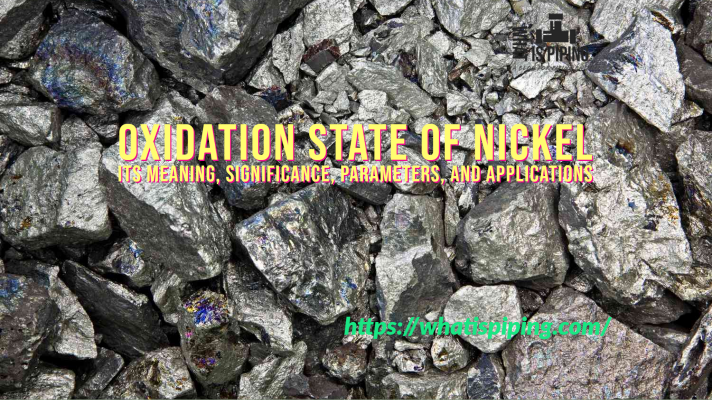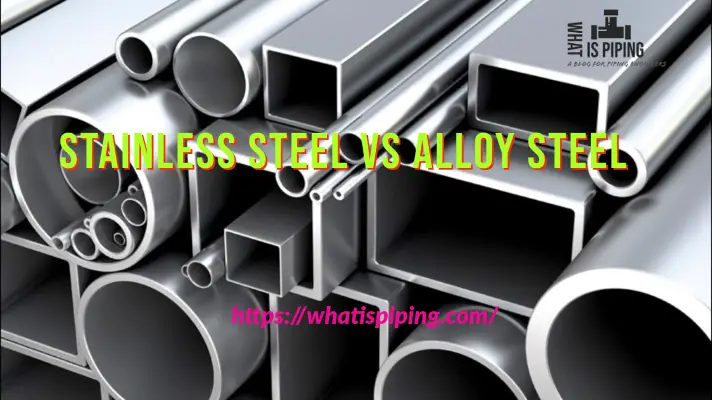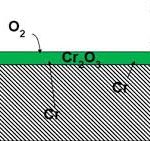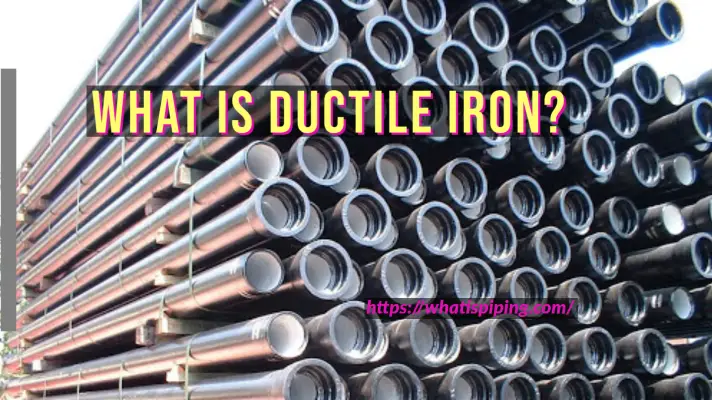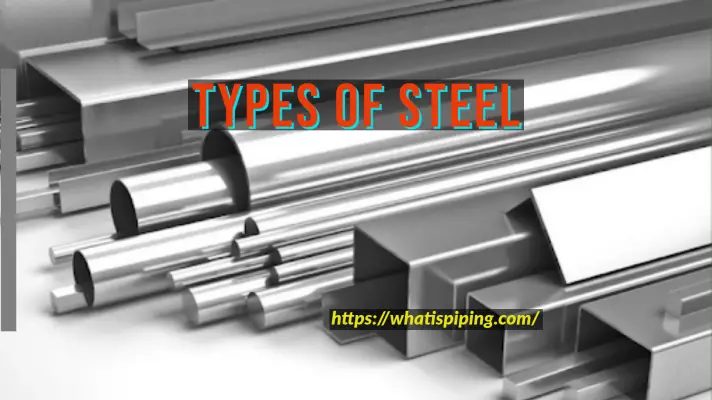Alloy 625 is a nickel-chromium-molybdenum alloy that exhibits excellent resistance to oxidation and corrosion. It is also known for its high strength and toughness, making it suitable for use in a wide range of industrial applications such as chemical processing, aerospace, and marine engineering. Additionally, Alloy 625 has good weldability and formability and is often used in the form of sheets, plates, bars, and forgings.
What is Alloy 625?
Alloy 625 is primarily composed of nickel (58-63%), chromium (20-23%), and molybdenum (8-10%). The addition of iron (up to 5%) and trace amounts of other elements like niobium, tantalum, and carbon enhances the alloy’s overall performance. This unique composition grants the alloy its exceptional resistance to oxidation, corrosion, and fatigue, making it ideal for harsh environments.
The metallurgical structure of Alloy 625 plays a significant role in its performance. The microstructure is a face-centered cubic (FCC) lattice, which contributes to its excellent ductility and toughness. This structure enables the alloy to undergo significant deformation without fracturing, an essential characteristic for applications involving high-stress environments.
Applications of Alloy 625
Alloy 625 is a versatile alloy that has a wide range of industrial applications due to its excellent resistance to oxidation and corrosion, high strength, and toughness. Some of the most common applications include:
- Chemical processing: Alloy 625 is used in the production of chemical processing equipment, such as heat exchangers, tanks, and piping, due to its resistance to corrosion by a wide range of chemicals.
- Aerospace: Alloy 625 is used in the aerospace industry for components such as jet engine exhaust systems and ducting, as well as for structural parts on aircraft and spacecraft.
- Marine engineering: Alloy 625 is used in marine engineering applications, such as for the construction of ships and offshore oil and gas production platforms, due to its excellent resistance to seawater corrosion.
- Power generation: Alloy 625 is used in power generation applications, such as for components in nuclear and fossil-fuel power plants, due to its high strength and resistance to high-temperature corrosion.
- Nuclear: Alloy 625 is used for the construction of nuclear waste disposal containers and nuclear fuel storage containers due to its excellent resistance to corrosion and high strength.
- Oil and Gas: Alloy 625 is used in the oil and gas industry for the production of wellhead equipment, valve and pump components, tubing, and flare tips.
- Medical: Alloy 625 is also used for surgical instruments and implants because of its biocompatibility.
- Automotive: Alloy 625 is used in the automotive industry for exhaust systems, turbochargers, and catalytic converters due to its high strength and resistance to high-temperature corrosion.
Physical Properties of Alloy 625
Alloy 625 has the following physical properties:
- Density: 8.44 g/cm3 (0.306 lbs/in3)
- Melting point: 1350-1370 °C (2460-2490 °F)
- Specific heat: 0.107 J/g·°C (0.025 BTU/lb·°F)
- Thermal conductivity: 11.4 W/m·°C (6.5 BTU/ft·hr·°F) at 100°C
- Thermal expansion: 13.3 µm/m°C (7.3 x 10⁻⁵ in/in°F)
- Electrical resistivity: 0.073 µΩ·cm (20°C)
- Magnetic susceptibility: <1.05 x 10⁻⁵ (cm³/g)
These properties can vary slightly depending on the specific grade of alloy 625 being used and the manufacturing process. It’s important to note that some properties like yield strength, elongation, and hardness can be affected by heat treatment, cold working, and the aging process.
Chemical Compositions of Alloy 625
Alloy 625 is a nickel-chromium-molybdenum alloy. The typical chemical composition of Alloy 625 is as follows:
- Nickel: 58% – 63%
- Chromium: 20% – 23%
- Molybdenum: 8% – 10%
- Iron: 5% – 9%
- Manganese: 1% max
- Carbon: 0.10% max
- Silicon: 0.50% max
- Phosphorus: 0.015% max
- Sulfur: 0.015% max
- Niobium: 3.15-4.15%
- Titanium: 0.40-1.00%
It’s worth noting that the chemical composition of Alloy 625 can vary slightly depending on the specific grade and the manufacturer. It’s important to consult with the manufacturer to ensure that the alloy meets the requirements of the specific application.
Mechanical properties of Alloy 625
Alloy 625 is known for its high strength and toughness. The mechanical properties of Alloy 625 can vary depending on the specific grade and the manufacturing process. Typically, Alloy 625 has the following mechanical properties:
- Tensile strength: 650 MPa (94,000 psi) minimum
- Yield strength: 460 MPa (66,700 psi) minimum
- Elongation: 30% minimum
- Hardness (Brinell): 217 HB maximum
- Impact strength: 40 J (30 ft-lb) at -196°C (-320°F)
- Young’s modulus: 205 GPa (29700 ksi)
It’s important to note that these properties can be affected by heat treatment, cold working, and aging. Additionally, the mechanical properties of Alloy 625 are also influenced by the composition, microstructure, and manufacturing process. It’s important to consult with the manufacturer to ensure that the alloy meets the requirements of the specific application.
Grades of Alloy 625
Alloy 625 is available in several grades, including:
- UNS N06625: This is the standard grade of Alloy 625 and is commonly used in a wide range of industrial applications.
- UNS N06686: This is a higher purity grade of Alloy 625 that is used in applications that require enhanced corrosion resistance, such as marine engineering and aerospace.
- UNS N08925: This is a low-carbon version of Alloy 625 that is often used in applications where high strength and corrosion resistance are required.
- UNS N08031: This is a high-chromium version of Alloy 625 that is used in applications where high corrosion resistance is needed.
- UNS N08034: This is a high-molybdenum version of Alloy 625 that is used in applications where high strength and corrosion resistance are required.
It’s worth noting that these are the most common grades, however, depending on the manufacturer and the application, there might be other grades available.
Alloy 625 vs Inconel 625: Difference between Alloy 625 and Inconel 625
Alloy 625 and Inconel 625 are both nickel-chromium-molybdenum alloys, but there are some differences between them.
- Brand name: “Inconel 625” is a trademarked brand name for a specific grade of alloy 625. So Inconel 625 is a specific version of Alloy 625 developed and marketed by the company Special Metals Corporation.
- Chemical composition: The chemical composition of Inconel 625 is similar to that of Alloy 625, but Inconel 625 may have higher levels of niobium and titanium.
- Mechanical properties: The mechanical properties of Inconel 625 are similar to those of Alloy 625, but Inconel 625 may have higher strength and toughness.
- Applications: Both alloys are used in similar applications, such as chemical processing, aerospace, and marine engineering, due to their high strength and resistance to corrosion, but Inconel 625 may be used in more critical applications or in harsher environments.
- Cost: Inconel 625 is generally more expensive than Alloy 625 because it is a trademarked product and it is developed to have higher properties than standard alloy 625.
In summary, Inconel 625 is a specific version of Alloy 625 developed and marketed by Special Metals Corporation, which may have a slightly different chemical composition, higher strength, and toughness and is more expensive.
Alloy 625 Pipe
Alloy 625 pipe is a pipe made from the nickel-chromium-molybdenum alloy 625. It is known for its excellent resistance to corrosion, high strength, and toughness, making it suitable for use in a wide range of industrial applications such as chemical processing, aerospace, marine engineering, and power generation.
Alloy 625 pipe is often used in high-temperature and high-pressure applications, such as in power generation plants and oil and gas production facilities. It is resistant to corrosion by a wide range of chemicals, including chlorine and sulfuric acid. Additionally, it is also resistant to oxidation and carburization at high temperatures.
Alloy 625 pipe is available in seamless and welded forms, and it can be fabricated in various sizes, shapes, and wall thicknesses to suit the specific requirements of the application. It is also available in different grades, such as UNS N06625, UNS N06686, UNS N08925, and UNS N08031, among others.
Alloy 625 pipe is often used in the form of tubing, as well as in the form of pipe fittings and flanges. It’s worth noting that the pipe should be manufactured in accordance with the appropriate ASTM standards, to ensure that the properties of the alloy 625 pipe meet the requirements of the intended application.
Properties of Alloy 625 Pipes
Corrosion Resistance
One of the standout features of Alloy 625 is its exceptional corrosion resistance. It is particularly effective against:
- Oxidizing Environments: The high chromium content forms a protective oxide layer, preventing further oxidation.
- Reducing Environments: The molybdenum content enhances resistance to pitting and crevice corrosion.
- Acidic Conditions: It can withstand corrosive chemicals such as sulfuric and hydrochloric acids, making it an excellent choice for chemical processing industries.
High-Temperature Stability
Alloy 625 maintains its mechanical properties even at elevated temperatures (up to 1,000°F or 540°C). This stability makes it ideal for applications in jet engines, gas turbines, and other high-temperature environments where materials are subjected to extreme conditions.
Fatigue Resistance
The alloy’s unique microstructure and composition grant it excellent fatigue resistance, allowing it to endure repeated stress cycles without failure. This characteristic is vital for applications involving dynamic loads, such as in the aerospace and marine industries.
Weldability
Alloy 625 exhibits excellent weldability due to its low carbon content and high nickel content. This feature allows for the fabrication of complex geometries without compromising the integrity of the material. It can be welded using various techniques, including TIG, MIG, and submerged arc welding.
Specification of Alloy 625 Pipes
Alloy 625 pipe is manufactured to meet various industry standards and specifications, such as:
- ASTM B444/B704: This specification covers seamless and welded nickel-chromium-molybdenum alloy pipe (UNS N06625 and UNS N06686) in the form of cold-worked and hot-finished.
- ASTM B705: This specification covers welded nickel-chromium-molybdenum alloy pipe (UNS N06625 and UNS N06686) in the form of cold-worked and hot-finished.
- ASTM B564: This specification covers nickel alloy flanges (UNS N06625 and UNS N06686) in the form of blind, welding neck, slip-on, and socket-welding flanges.
- ASTM B366: This specification covers nickel alloy fittings (UNS N06625 and UNS N06686) in the form of elbows, tees, crosses, laterals, reducers, caps, and outlets.
- ASME SB-444/SB-704: This specification covers seamless and welded nickel-chromium-molybdenum alloy pipe (UNS N06625 and UNS N06686) in the form of cold-worked and hot-finished.
- ASME SB-705: This specification covers welded nickel-chromium-molybdenum alloy pipe (UNS N06625 and UNS N06686) in the form of cold-worked and hot-finished.
These standards define the chemical composition, mechanical properties, and dimensional requirements for Alloy 625 pipe. It’s important to consult with the manufacturer to ensure that the alloy 625 pipe meets the requirements of the specific application.
Alloy 625 pipes represent a fusion of strength, durability, and versatility, making them indispensable in many high-performance applications. Understanding their composition, properties, and applications can help industries choose the right materials for their needs.
Reference and Further Studies
For more details, you can read the following article:
- https://www.specialmetals.com/documents/technical-bulletins/inconel/inconel-alloy-625.pdf



